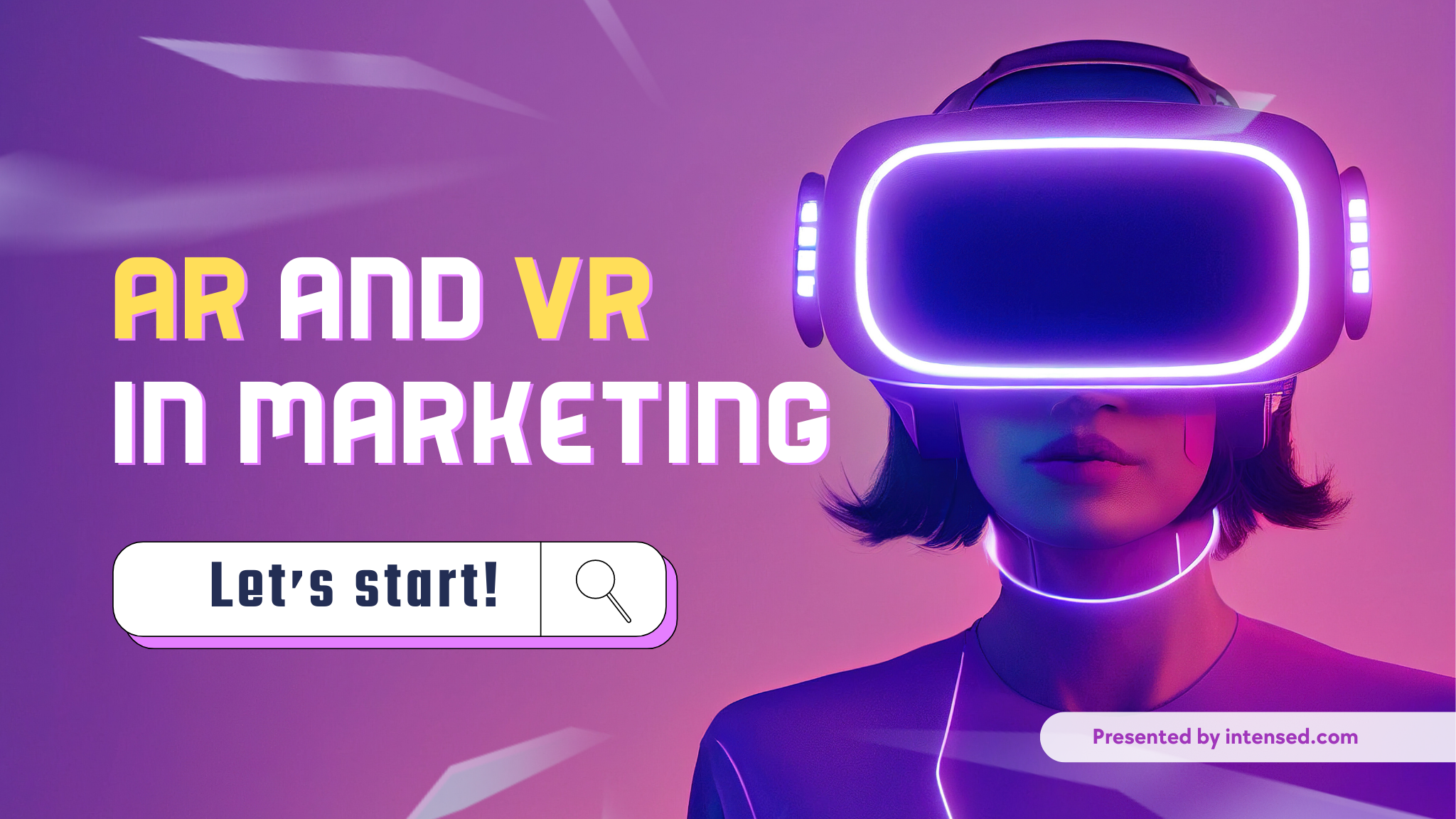Augmented reality (AR) and virtual reality (VR) are two of the most exciting technologies transforming the marketing landscape. By superimposing digital elements onto the real world (AR) or creating fully immersive virtual environments (VR), brands can provide their customers with interactive and multi-sensory experiences that foster deeper engagement.
According to recent research, the global AR and VR market is projected to grow at an astonishing compound annual growth rate of 10.77% between 2022-2027, reaching a total market value of $58.1 billion by 2027.With such tremendous growth on the horizon, it’s clear that AR and VR will revolutionize marketing strategies in the coming years.
In this blog post, we’ll explore the definitions and differences between AR and VR, discuss the benefits these technologies offer for marketers, provide real-world examples and use cases, examine challenges and considerations, and offer best practices for implementing AR and VR marketing campaigns. By the end, you’ll have a comprehensive overview of how leading-edge brands are leveraging AR and VR to create the next generation of unforgettable customer experiences.
Understanding AR and VR
To understand how AR and VR are transforming marketing, it’s important to first understand what these technologies are and how they differ.
What is Augmented Reality (AR)?
Augmented reality integrates digital information and media into the user’s real-world environment. AR technology overlays computer-generated content like 3D models, video, audio, and graphics onto a user’s surroundings in real-time.
For example, an AR experience could overlay arrows and directions onto the sidewalk to guide a user to their destination. Or, it could display product information and animations when a user points their smartphone camera at a specific item or image. Popular AR examples include Snapchat and Instagram filters, Pokemon Go, and IKEA’s AR furniture app.
What is Virtual Reality (VR)?
Virtual reality fully immerses users inside a computer-simulated 3D environment cut off from the real world. VR headsets like the Oculus Rift and HTC Vive completely obscure the user’s vision and replace it with a virtual landscape they can interact with.
Instead of supplementing the real-world like AR, VR transports users to an artificial digital dimension. VR technology can simulate sensory experiences including vision, hearing, touch, and even smell. Well-known VR applications include immersive games and entertainment as well as virtual tours and simulations.
Key Differences Between AR and VR
While AR and VR share the common theme of enhanced digital experiences, there are some important distinctions between the two:
- Immersion: VR is fully immersive, surrounding the user in a self-contained virtual environment. AR merely overlays digital content onto the existing real-world setting.
- Real-world interaction: AR supplements reality, allowing continued interaction with the user’s surroundings. VR completely isolates users from the real world.
- Hardware: VR requires headsets and goggles for creating a closed visual experience. AR can work using smartphones, tablets, and other devices with cameras and screens.
- Use cases: VR works well for fully escapist, interactive experiences like games and virtual tourism. AR is ideal for informational overlays onto real-world settings.
- Development costs: High-quality VR experiences require intensive graphic development and programming. Many AR apps can be built using simpler and more accessible software platforms.
By understanding these key differences, marketers can determine which technology best suits their specific goals and use cases. Many experts predict AR will see more widespread adoption in marketing due to its simpler implementation using smartphones. However, VR offers benefits for certain specialized branding goals.
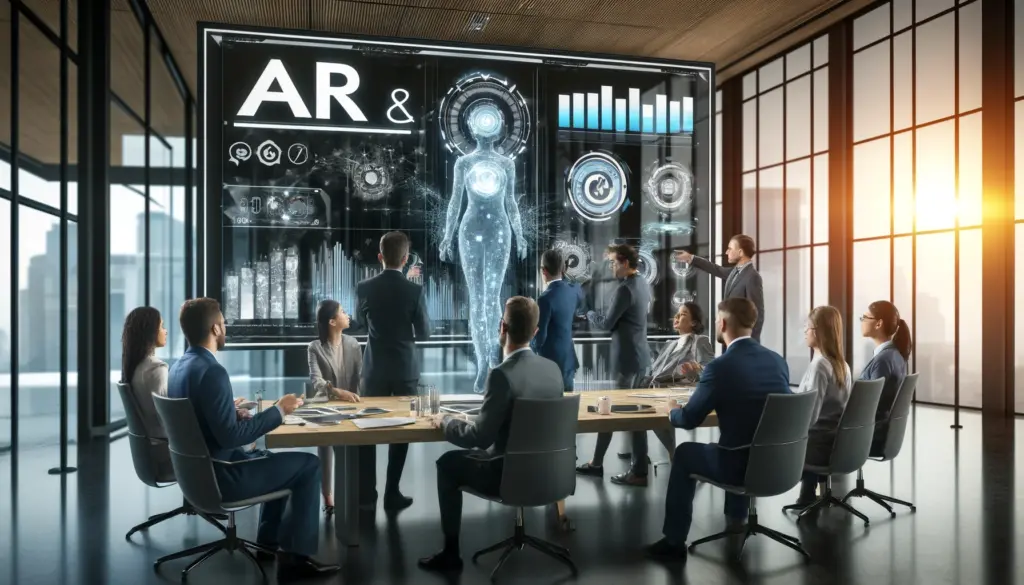
Benefits of AR and VR in Marketing
Augmented and virtual reality open new possibilities for marketers to engage customers, build brand awareness, generate leads, and drive sales. Here are some of the most impactful benefits these emerging technologies offer:
Enhanced Customer Engagement and Interactivity
AR and VR enable brands to cultivate the type of memorable, interactive experiences that foster strong emotional connections with customers.
For example, AR allows customers to virtually interact with branded content by bringing static objects like billboards to life. A 2019 study found that 61% of customers felt AR technology boosted their interaction and engagement with brands.
Meanwhile, VR provides a captivating sense of immersion that increases engagement. Research by YouGov shows consumers who viewed VR ads had a 27% higher product recall compared to traditional video ads.
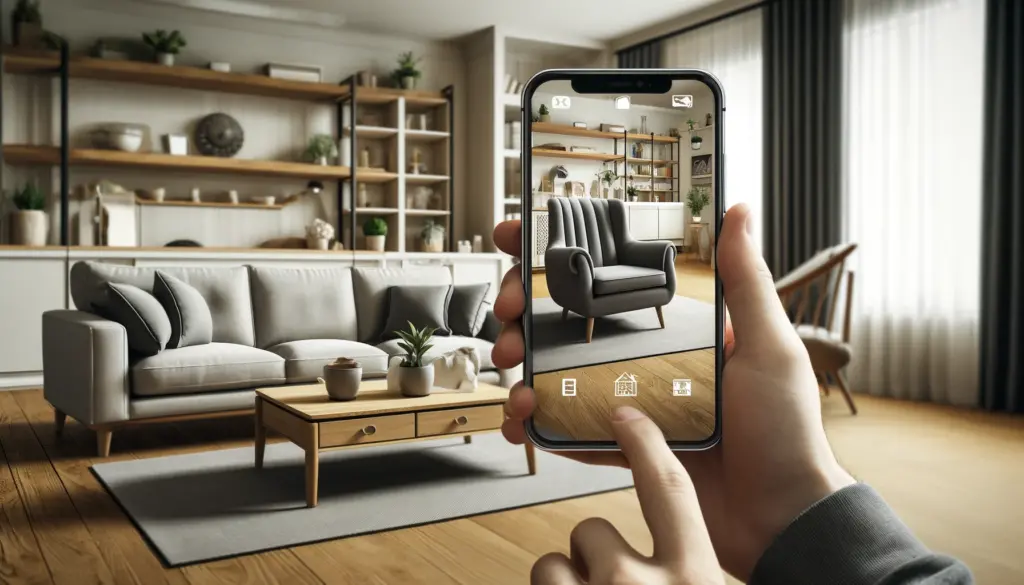
Improved Brand Awareness and Recall
Speaking of brand recall, AR and VR campaigns can significantly strengthen brand awareness and memorability. A survey by DigitalBridge found that 69% of consumers were more likely to remember a brand using AR.
VR also sticks in users’ minds. A study by Nielsen revealed 81% of respondents recalled a VR brand experience they tried in the past year. By crafting unforgettable AR and VR encounters, brands can become more recognizable and memorable.
Increased Conversion Rates and Sales
Beyond branding, AR and VR technologies can also drive measurable business results like higher conversion rates. Data from Shopify indicates shoppers are 1.6x more likely to purchase products after viewing them via AR.
Looking at VR, research by Retail Perceptions showed that VR increased intent to purchase by a whopping 215% across product categories. The interactive previews in AR and VR give customers confidence to convert.
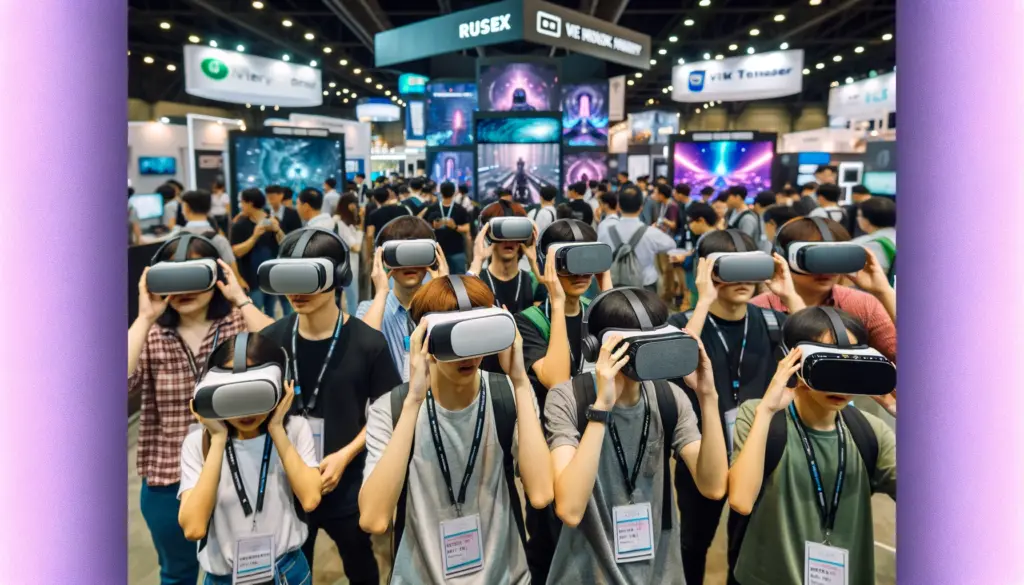
Valuable Data and Insights for Personalization
AR and VR also provide a treasure trove of customer behavioral data that can be used to improve personalization. For example, VR environments allow brands to track details like where users look and linger, providing insight into preferences and reactions.
Meanwhile, AR apps can gather data about surroundings to serve contextually relevant overlays. These insights help marketers tailor and customize messages to each user.
Competitive Advantage and Differentiation
Perhaps most importantly, AR and VR can be powerful competitive differentiators. Brands leveraging these new technologies stand out and attract attention in crowded markets.
A survey by DigitalBridge indicated that 46% of customers felt AR allowed brands to provide an experience competitors could not. As AR and VR see increased adoption in marketing, those who fail to incorporate them will be left behind.
Use Cases and Applications
Now that we’ve covered the benefits, let’s explore some real-world examples and use cases where brands are implementing AR and VR in innovative ways:
Product Demonstrations and Virtual Try-ons
One of the most natural applications of AR and VR is giving customers virtual previews of products before they purchase. IKEA’s mobile app allows users to preview true-to-scale furniture in their own homes. Gucci has an AR shoe app that uses augmented reality to let shoppers “try on” shoes.
Meanwhile, Sephora’s Virtual Artist app lets shoppers test different makeup products and styles using AR. Not only do these virtual try-ons boost confidence to purchase, but they also reduce product returns.
AR and VR also enable brands to create engaging product demonstrations. For example, Volvo created an interactive AR experience where users could explore the company’s new car safety features. Hyundai takes test drives to the next level with VR experiences that simulate driving conditions.
Immersive Brand Experiences
Brands are increasingly leveraging AR and VR to immerse customers in experiential environments that bring their identity and products to life. These branded virtual environments provide a deeper brand connection than traditional marketing.
For example, Mountain Dew created a branded VR roller coaster for the Rift headset, aligning with their extreme sports-loving persona. Vans used AR to transform their sneaker boxes into virtual portals containing immersive branded content. The North Face developed a VR mountain climbing experience that simulated ascending the slopes of Yosemite from home.
AR and VR activations also provide a way for brands to stand out at conferences and events. Porsche, for instance, created an interactive AR exhibit at a trade show that reacted when attendees approached different displays.
Advertising and Promotions
AR and VR unlock new possibilities for captivating and interactive advertising formats. Brands can overlay contextual digital promotions onto the real world using AR to catch customer attention.
For example, Ray-Ban created an AR campaign where sleek virtual sunglasses appeared on bus stop ads when viewed through a smartphone. Similarly, Lynx used AR to make angels with virtual wings appear above people on escalators if they used the brand’s body spray.
For VR, Pepsi created an immersive branded amusement park filled with experiences like a virtual slingshot ride. These types of campaigns allow brands to step outside the limits of traditional advertising.
Another key use case is branded AR lenses and filters for social media. Users can overlay fun branded masks and effects onto their faces using platforms like Snapchat and Instagram. For instance, Louis Vuitton launched an AR filter on Facebook during a product launch.
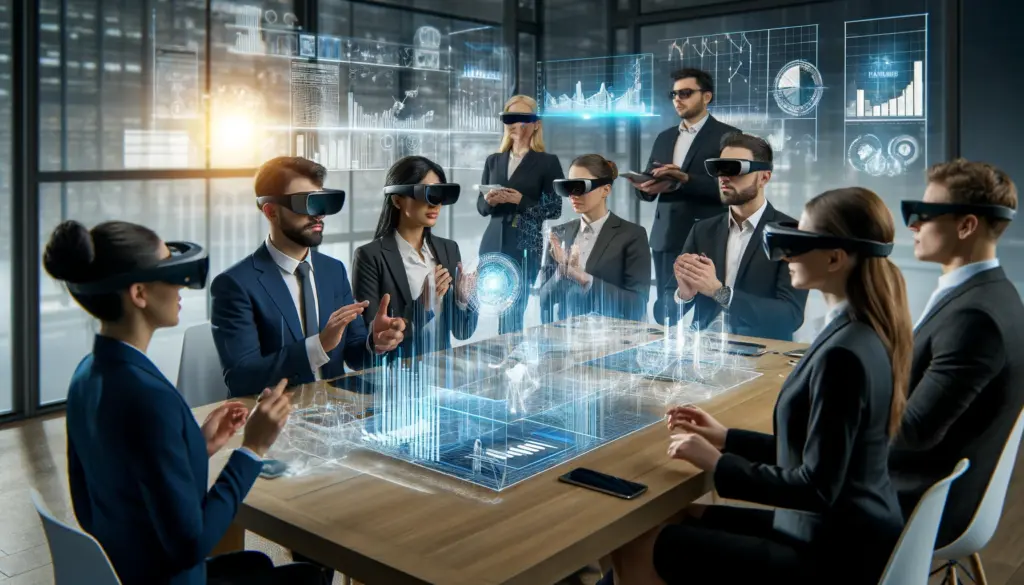
Challenges and Considerations
While the possibilities may seem endless for AR and VR in marketing, brands should also be aware of some challenges and considerations:
High Development and Implementation Costs
A key downside of AR and VR is the high cost of designing, developing, and implementing experiences, especially for VR. The level of 3D animation and programming required is extensive. While costs are dropping as the technologies mature, AR/VR requires greater investment than other digital marketing channels.
Technical Limitations and Compatibility Issues
Given their cutting-edge nature, AR and VR technologies still face some technical constraints. For example, early AR experiences relied on QR code scanning, limiting use cases. VR headsets also had low resolution and caused motion sickness initially. As the tech advances, these issues are shrinking but remain barriers in some cases.
User Adoption and Accessibility
While growing quickly, user adoption of AR and VR is still relatively limited. Consumers need sufficient devices and technical literacy to access experiences. There are also remaining concerns about inclusiveness and accessibility for those with disabilities. As more refined user interfaces are developed, adoption will continue expanding.
Privacy and Data Security Concerns
Like other digital channels, privacy and data security remain key considerations for AR and VR. Brands must be transparent about data collection through apps and headsets. If users feel their personal data is at risk, it will undermine confidence and trust in the technologies.
Future Trends and Predictions
Looking ahead, what might the future hold for AR and VR marketing? Based on current momentum, experts predict several likely trends:
Increased Integration of AI and Machine Learning
To enhance realism and personalization, AI and machine learning will likely be incorporated more into AR/VR experiences. For example, AI characters like virtual avatars could react dynamically to user behavior using speech recognition and machine learning.
Advancements in AR and VR Hardware and Software
While still early days, hardware like AR headsets and VR lenses will continue advancing to become more mainstream. Higher display resolutions, expanded field of view, and 5G connectivity will enhance experiences. On the software front, 3D simulation technology and graphical capabilities will also improve.
Expansion into New Industries and Sectors
To date, AR and VR marketing applications have focused heavily on retail and product brands. However, as the technology matures, a wider range of sectors like healthcare, education, and manufacturing could adopt AR and VR. Marketers across industries will find new applications.
Mainstream Consumer Adoption and Accessibility
As costs decrease and capabilities improve, AR and VR will likely transition from novelty tech into mass market ubiquity. More brands and agencies will invest in the technology as adoption hits critical mass. Accessibility features like voice navigation could also expand inclusion.
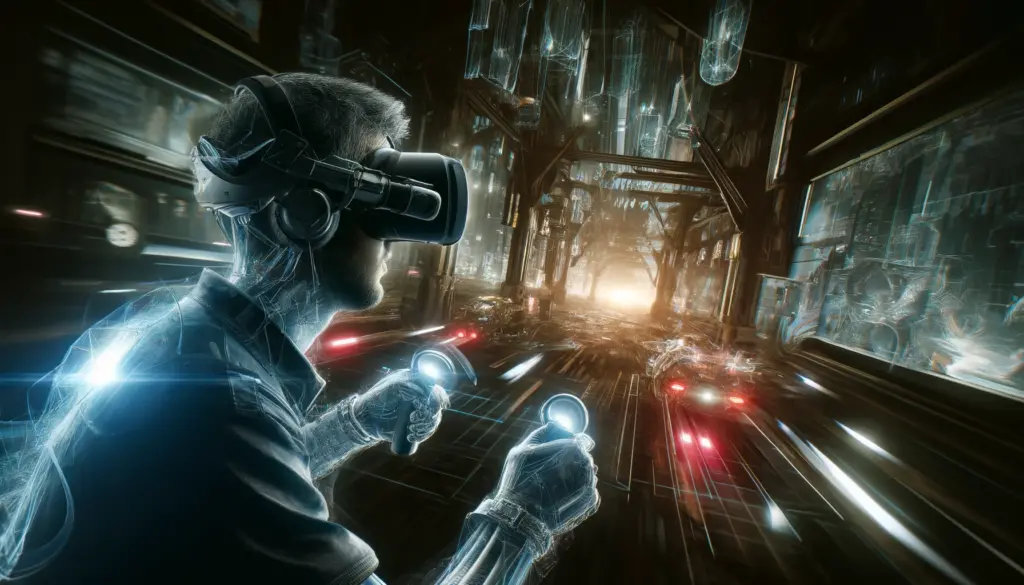
Best Practices for Implementing AR and VR in Marketing
Eager to start capitalizing on AR and VR’s potential? Here are some top tips to guide your initiatives:
Define Clear Objectives and KPIs
Focus efforts by setting concrete goals and KPIs from the outset. Is the priority brand awareness? Lead generation? Sales? Defining success metrics tailors the experience.
Understand Your Target Audience and Their Preferences
Take time to research your audience demographics and analyze their needs and interests. Develop AR and VR experiences suited to their expectations and comfort with technology.
Choose the Right Platform and Technology
Evaluate whether AR or VR best matches your use case and content strategy. Determine required tech capabilities and weigh options like web vs. mobile implementation.
Create Engaging and Interactive Content
Well-produced 3D visual assets, simulations, and interactive features are key. Test content prototypes to ensure AR and VR experiences are captivating before public launch.
Optimize for User Experience and Accessibility
Design AR and VR content for intuitive usability, minimizing complexity. Ensure experiences comply with accessibility standards and offer options for those with disabilities.
Measure and Analyze Performance Metrics
Track KPIs like user engagement, sales impact, and brand recognition. Analyze data to glean insights and continually refine AR and VR content based on what resonates.
Conclusion
AR and VR present an unparalleled opportunity for marketers to reimagine customer engagement and redefine brand experiences. As these technologies gain mainstream traction, companies that fail to embrace AR and VR risk falling behind their more innovative competitors. Leveraging interactive AR and VR activations, from product previews to immersive bran environments, can help form deeper customer connections, boost brand recall, and drive measurable business results.
However, brands must approach AR and VR thoughtfully, weighing considerations like costs, technical barriers, accessibility, and data privacy. Maintaining a user-centric perspective and applying best practices will position AR and VR initiatives for success. The marketing potential of augmented and virtual reality is only just starting to unfold. Savvy brands who are first to adopt these reality-bending technologies will have a substantial competitive advantage in engaging the consumers of the future.
Frequently Asked Questions
What are the most popular AR and VR applications in marketing?
AR and VR technologies have revolutionized marketing by offering immersive experiences. Popular applications include product demonstrations, virtual try-ons, branded VR experiences, and event marketing.
How does AR and VR impact customer engagement?
AR and VR technologies enhance customer engagement by providing interactive experiences that allow users to explore products and services in a more engaging and personalized manner.
What industries are most affected by the growth of AR and VR?
The oil and gas and manufacturing industries are expected to be the primary drivers of the AR and VR market’s growth, with applications in training, education, and entertainment.
What are the benefits of AR and VR in marketing?
Benefits include enhanced customer engagement, improved brand awareness, increased conversion rates, valuable data for personalization, and competitive advantage.
What are the challenges of implementing AR and VR in marketing?
Challenges include high development and implementation costs, technical limitations, user adoption, and privacy concerns.
How does AR and VR technology influence the job market?
The growing AR and VR market is creating demand for skilled professionals, particularly in software development.
What is the future of AR and VR in marketing?
The future of AR and VR in marketing is promising, with advancements in technology, increased adoption, and expansion into new industries.
What are the best practices for implementing AR and VR in marketing?
Best practices include defining clear objectives, understanding your target audience, choosing the right platform, creating engaging content, and optimizing for user experience.
What is the impact of AR and VR on customer loyalty?
AR and VR technologies can enhance customer loyalty by providing unique and memorable experiences that strengthen the connection between customers and brands.
How does AR and VR technology affect the user experience?
AR and VR technologies offer a more immersive and personalized user experience, which can lead to increased engagement and loyalty.
